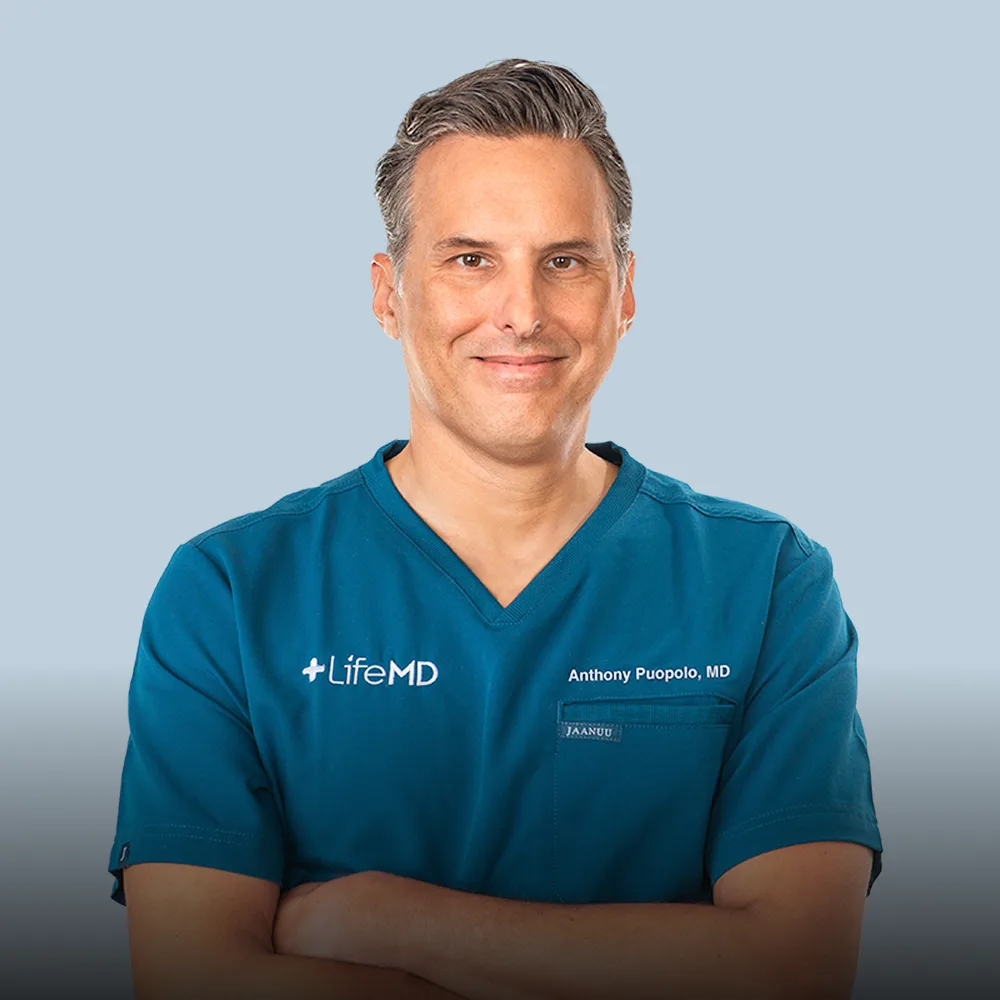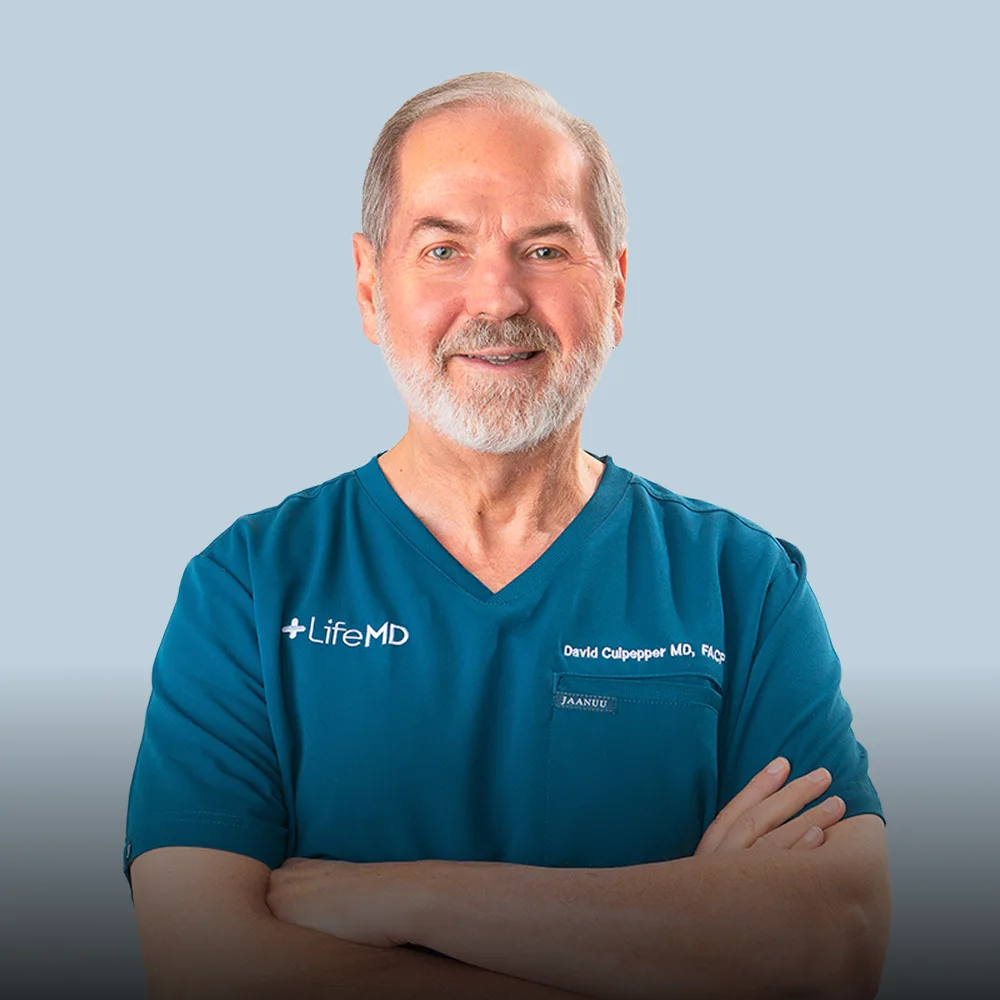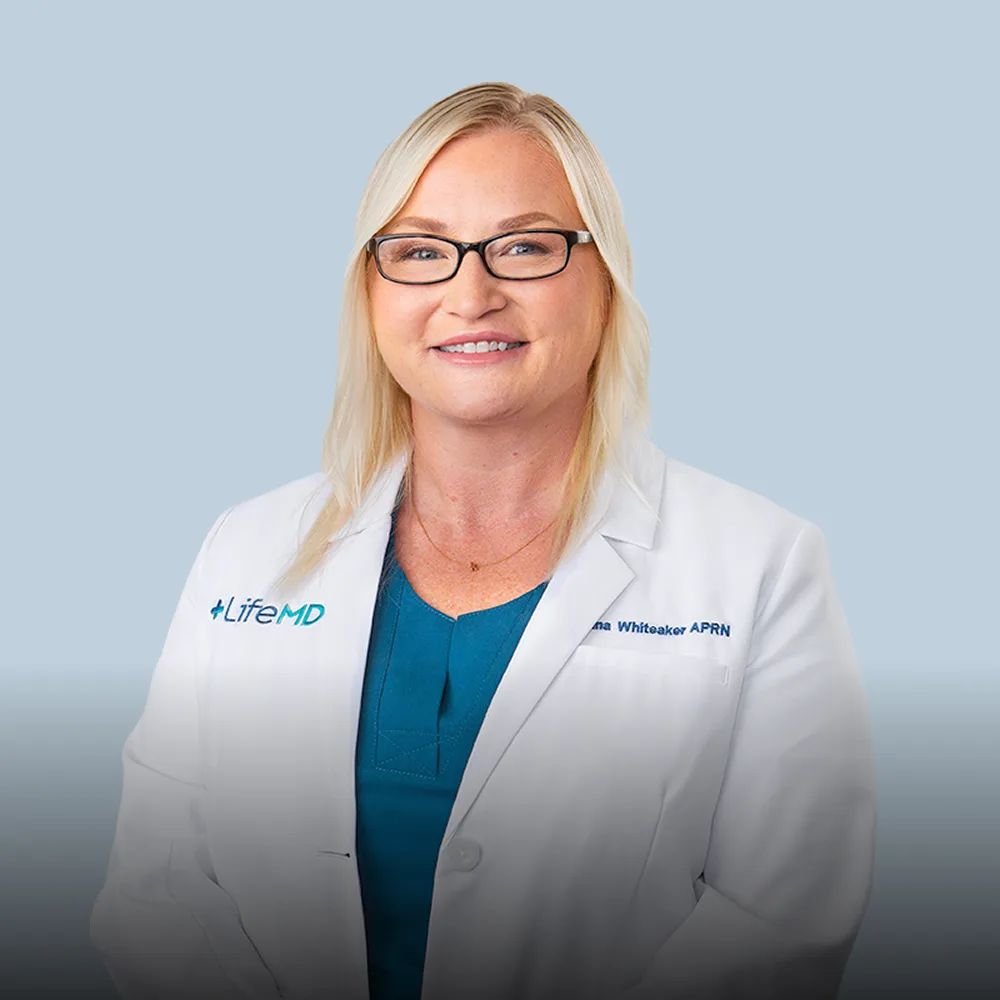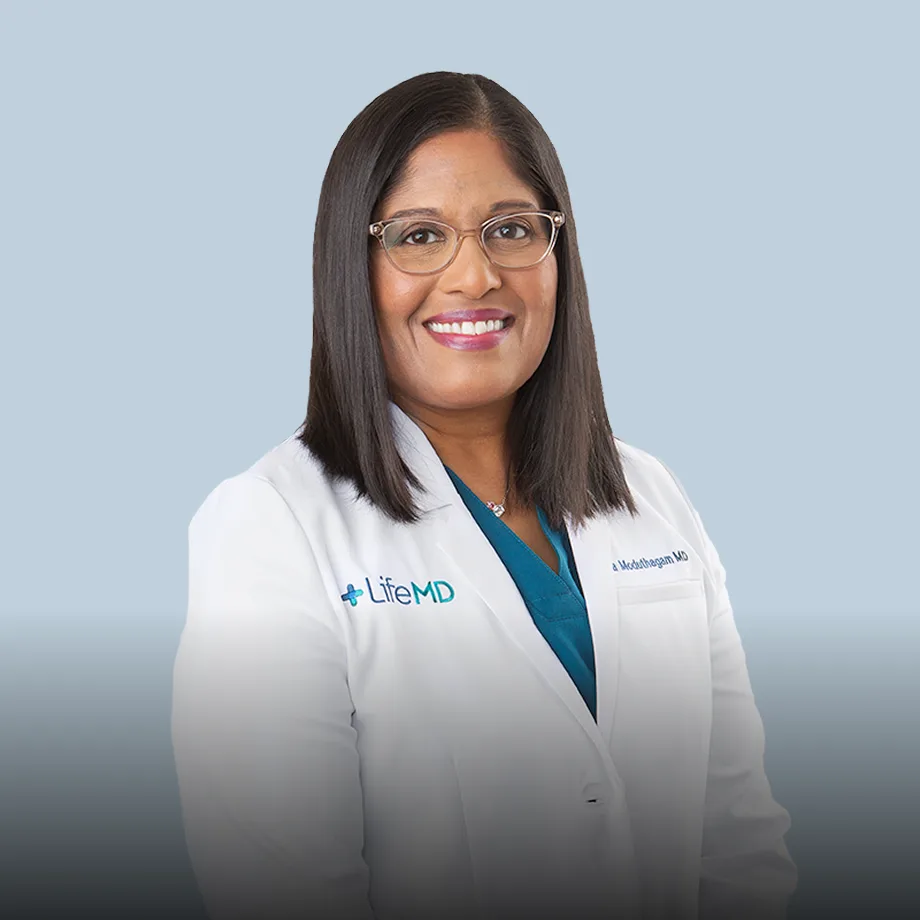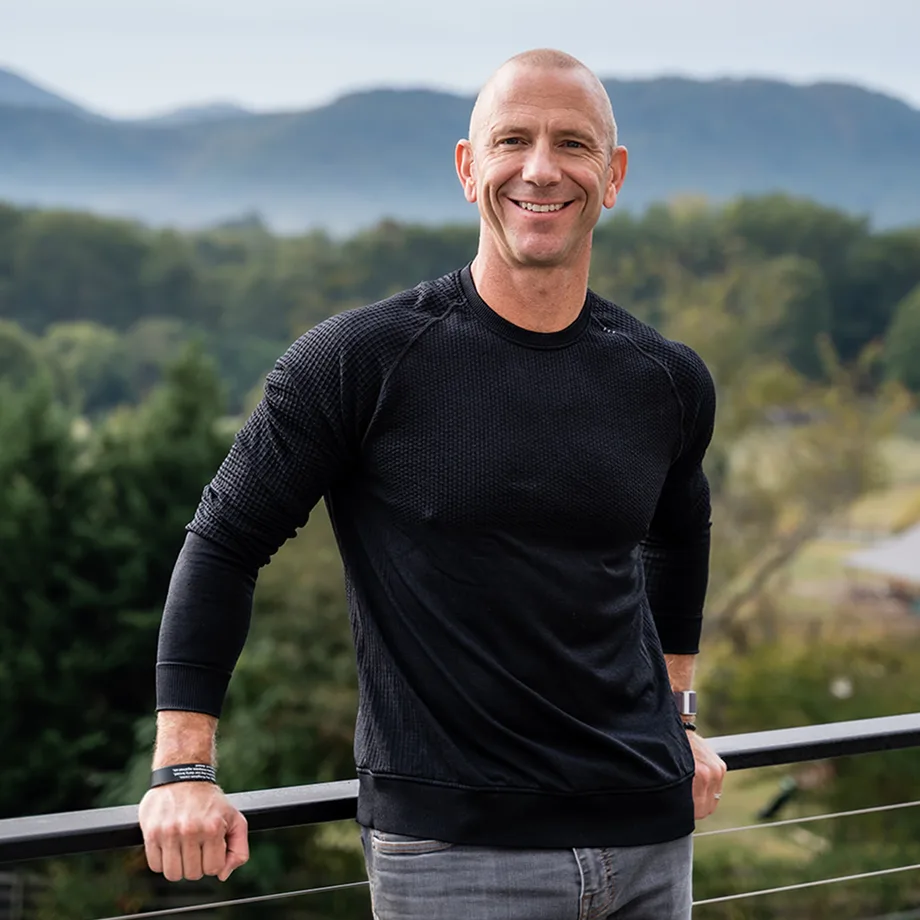
Dr. Doug Lucas
Internal MedicineGet to Know Dr. Doug Lucas
Dr. Doug Lucas is an experienced double board-certified orthopedic surgeon specializing in osteoporosis, metabolic health, hormonal health, and regenerative medicine.
In addition to his work helping patients understand how to improve their bone health and overall well-being, Dr. Lucas is the VP of Women's Health, Hormone & Lifestyle Optimization at LifeMD, formerly CEO of the telehealth platform Optimal Human Health MD, and the host of The Dr. Doug Show: Bones, Hormones and HealthSpan on YouTube.
Dr. Lucas earned his degree in osteopathic medicine from the Edward Via College of Osteopathic Medicine (VCOM). He completed orthopedic surgery training at Stanford University. Dr. Lucas is also certified in anti-aging and regenerative medicine.
Menopausal Bone Health Q&A
What drew me into bone and muscle health initially was noticing a huge clinical blind spot: women coming to me postmenopause (either already diagnosed with osteoporosis or worried about it), and their doctors had told them it was irreversible, inevitable, or worse, just handed them a bisphosphonate (drugs primarily used to slow down bone breakdown) and moved on.
I couldn’t accept that. I dug into the literature, and it became crystal clear: osteoporosis is not just preventable, but often reversible.
The more I explored, the more I realized that bone is a living tissue that is constantly remodeling. What affects it most is not just calcium and vitamin D, but hormones, strength, and metabolic health.
I shifted my focus to helping people preserve and even rebuild that structural foundation. I consider bone health as a biomarker of longevity rather than osteoporosis as a disease of the elderly.
This is key. Most people think osteoporosis is an old woman’s disease. Not true. Bone mass peaks by your early 30s, and what you do before then determines your lifetime fracture risk.
- Lift heavy: Impact and strength training stimulates bone growth.
- Optimize your hormones: Especially estrogen because even irregular cycles in your 20s matter.
- Prioritize protein: Many women undereat in general, but especially protein. Protein affects muscle and bone [growth].
- Stay nutrient-replete: Getting enough magnesium, potassium, vitamin K2, and omega-3s matter just as much as calcium and vitamin D.
Step one is to get imaging beyond a DEXA scan. DEXA scans tell you the quantity of bone fractures, but not the quality. I prefer REMS from Echolite [tests] if available, to understand real fracture risk.
Next steps:
- Address hormonal deficits
- Start resistance training, even if it’s modified
- Track bone turnover markers like P1NP and CTX to measure progress
- Don’t just chase calcium only. The bone matrix is protein-rich, so fuel accordingly.
The biggest myth? That osteoporosis is simply a calcium deficiency or just part of aging. It’s not.
It’s a systemic metabolic condition tied to hormones, inflammation, and muscle. If you’re losing bone, something's wrong!
Another one is that many think bone loss is silent until a break. But if you’re shrinking, stooping, or in chronic back pain, those are red flags.
And finally, people think once you have it, that’s it, but that’s outdated. Bones can rebuild with the right approach.
Yes. I recommend resistance training in combination with controlled impact tailored to the individual. One evidence-backed model is HiRIT (High-intensity Resistance and Impact Training). It includes resistance training at high intensity (80–85% of your one rep max).
Exercises may include deadlifts, squats, overhead press, and assisted hanging drops for impact.
That said, it’s not the only path. BioDensity and other forms of osteogenic loading, which use brief maximal isometric loading, can be incredibly effective. This is especially true for people who aren’t ready or able to do real impact training.
Whole body vibration devices like PowerPlate offer low-risk entry points for axial loading, too! The key is load and making sure it’s progressive, consistent, and safe.
A few game changers are coming:
- Non-invasive imaging: Like Echolite REMS to assess bone quality and fracture risk, not just density!
- Optimized HRT (hormone replacement therapy) Protocols tailored to the individual and bone turnover markers like peptide therapies and regenerative tools that work with lifestyle to build bone.
- AI-driven prediction models: Integrating fracture risk with hormone and metabolic markers
Communities like ours provide all the resources people need to DIY bone health and view bone health as a biomarker of longevity.
You have to treat the whole person. In my practice and videos, I emphasize that managing osteoporosis (whether it's kidney disease, autoimmune issues, or cardiovascular risk) requires nuance.
Supplements like vitamin D and calcium aren't universally safe or effective for everyone. Supplement use needs to be individualized based on lab values, comorbidities, and medication interactions.
The broader point is bone doesn't exist in isolation. If someone has another condition, it changes how I approach bone support.
From dosing nutrients to choosing the safest medications or exercise strategies, co-management and personalization are essential.
Menopause is so much more than people typically think of it as. Menopause marks a shift in a woman's life that will have a profound impact on the way that she ages.
The drop in estrogen and progesterone during menopause affects insulin sensitivity, lipid profiles, brain health, bone density, and on and on.
So when I treat women going through or having gone through menopause, I’m thinking about hormones but also mitochondria, inflammation, muscle mass, metabolism, brain, bone, and heart health!
Looking at bone health as a biomarker of longevity and recognizing that optimizing lifestyle habits and hormonal health can massively change the way a woman ages.
Through the lens of longevity, menopause happens in midlife. There’s the entire second half of life to consider. Let's get it right.
Strategies for preventing postmenopausal osteoporosis.
Consider tracking your cycle, sleep, stress, and strength now. Watch for changes like irregular cycles, worsening PMS, brain fog, musculoskeletal symptoms, and more. These are often the first whispers of a hormonal shift.
Don’t wait until it’s a scream. Early testing, lifestyle shifts (especially lifting heavy and eating more protein), hormone optimization, and support from open-minded clinicians can improve your health span through midlife.
Route of administration matters (transdermal estradiol is safest), progesterone form matters (bioidentical is preferred), and timing is key (starting within 10 years of menopause is ideal).
HRT is not a fountain of youth. But for many women, it’s the foundation of healthy aging.
